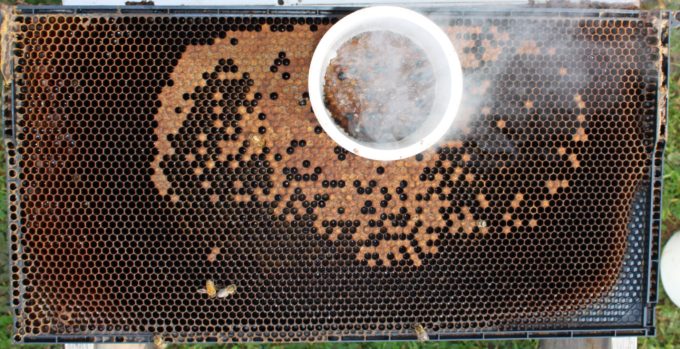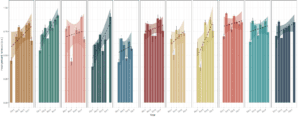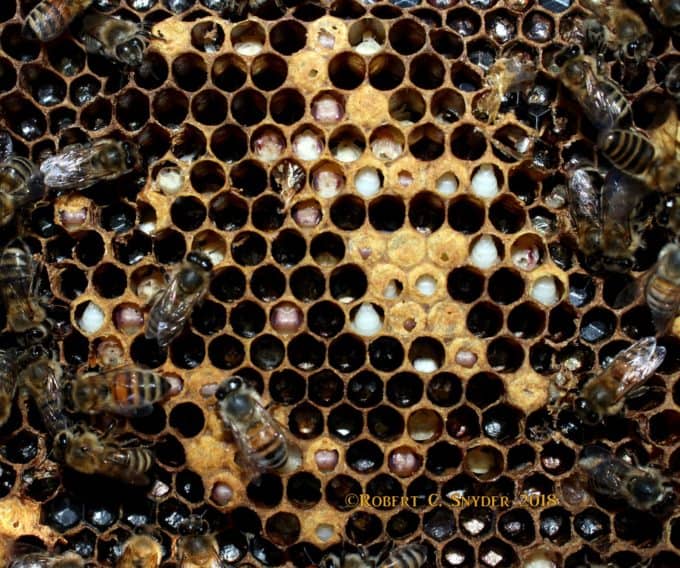This spring we will start Hygienic testing Queen breeders’ colonies. This is my favorite type of testing for beekeepers because we get to look at the best performing colonies in the entire operation. The beekeeper we work with often selects the best hives throughout the year for performance and marks them, then in the spring the final selections are made from spring build up and how well the colonies-maintained size over the winter. It is best if the colonies are all in the same yard because it is easier to go through colonies quickly. Sometimes we test in almonds and have to move from pallet to pallet throughout the orchard. We will usually test between 25-100+ hives depending on the size of operation or the number of breeders a queen producer will want to use for their breeding program.

Over the past seven years I have seen great improvements on hygienic scores overall. Beekeepers that have been selecting for the hygienic traits have improved little by little each year at selecting more colonies that test well. This fall I worked with Nathalie Steinhauer our BIP statistician to look at how the hygienic scores have been improving in 11 different operations. The graph below shows that beekeepers that have been selecting for the hygienic traits and testing for them have been improving each year. I feel that hygienic scores throughout colonies selected for the test amongst breeders has been more consistent due to our work assisting them select more hygienic breeders and drone mothers. I noticed new beekeepers to the program that haven’t been selecting for the traits don’t have as much uniformity throughout the selected colonies and don’t test as high overall. Although, the new beekeepers to the program that have been selecting for the traits the past few years have improved their hygienic stock and overall consistency. It amazed me to see improvements so fast, within 3 years of selection there were more high performing colonies than at the start.


Here is a colony that tested very well with 100 percent uncapped and removed brood in freeze-killed cells.
I have made many observations about the hygienic trait and saw first-hand why this should be an important tool for queen breeders and producers. Colonies with EFB observed were barely detectable because the bees were removing the sick larvae so fast. I also noted that colonies that were hygienic remove a lot of chalkbrood, but chalkbrood is harder to remove so colonies were not as cleaned out as seen with hygienic colonies that had EFB. One-way beekeepers spot hygienic colonies are by observing ones that chew newspaper from a split fast or a glycerin oxalic acid shop towel removed quickly. I don’t see as much Sacbrood Virus (SBV) here in California as I saw inspecting hives in Pennsylvania and in North Dakota, I often wonder if it is because the hygienic bees remove SBV larvae quickly? In all I feel the hygienic traits are necessary to help colonies combat diseases and other brood maladies, I look forward to the future of tests to see how these scores may change and perhaps correlate with other factors such as varroa loads.
